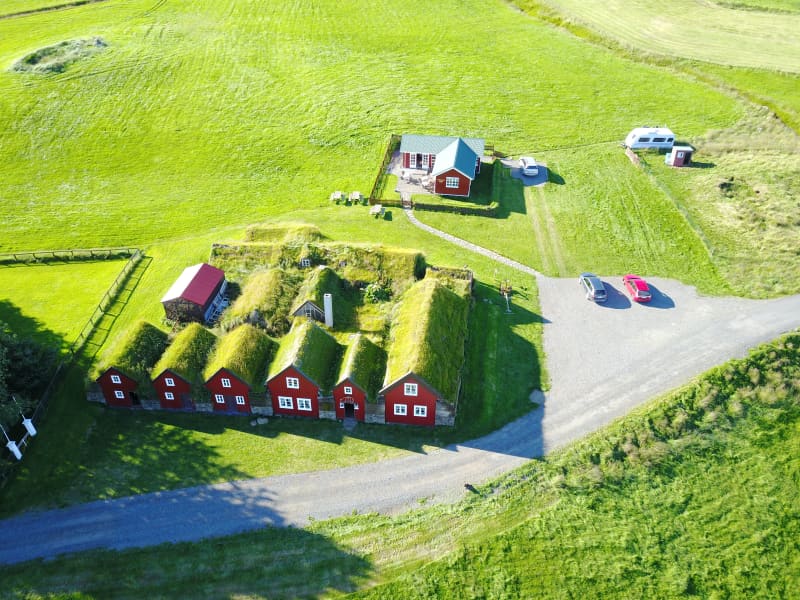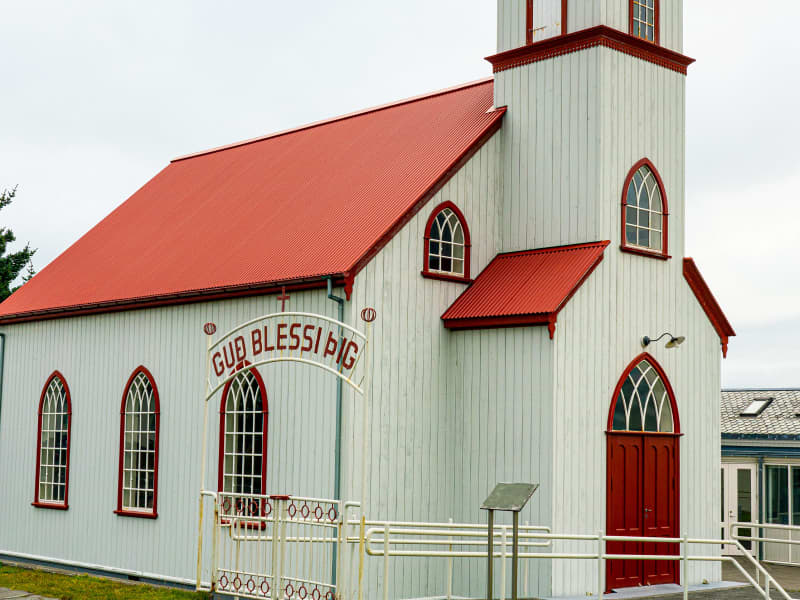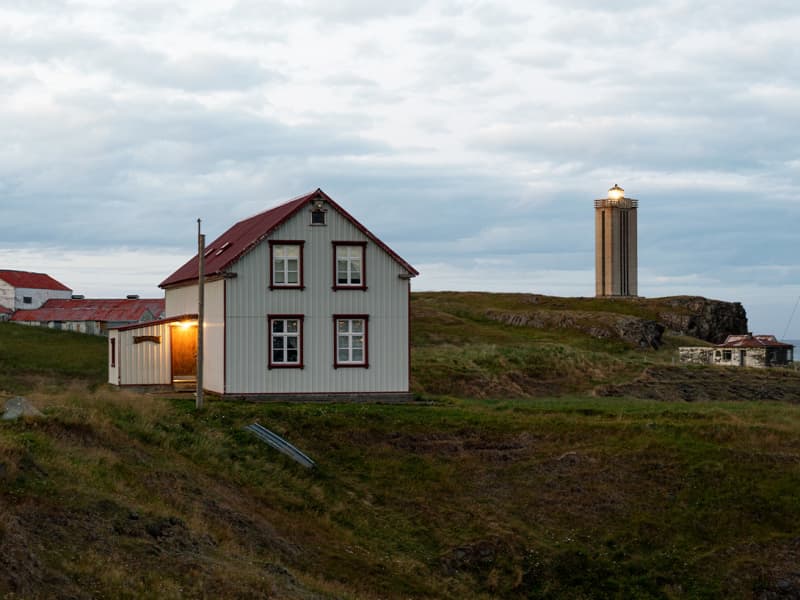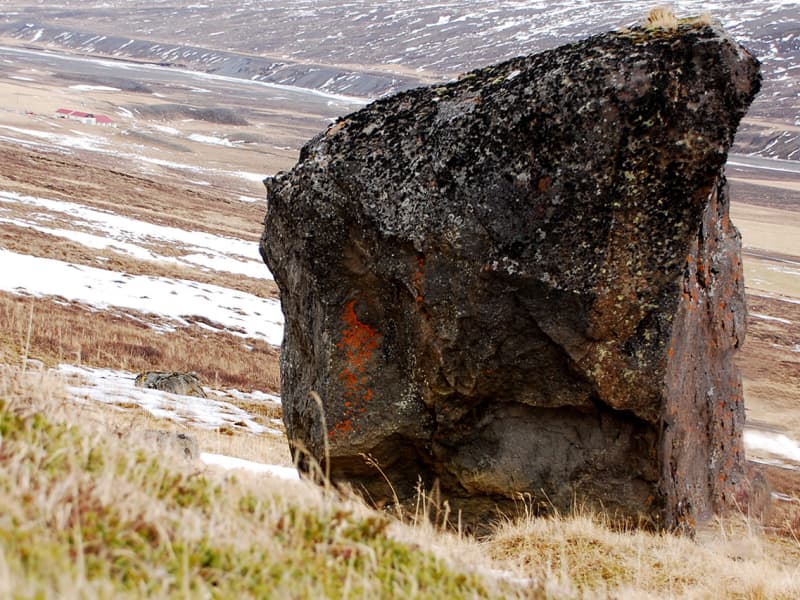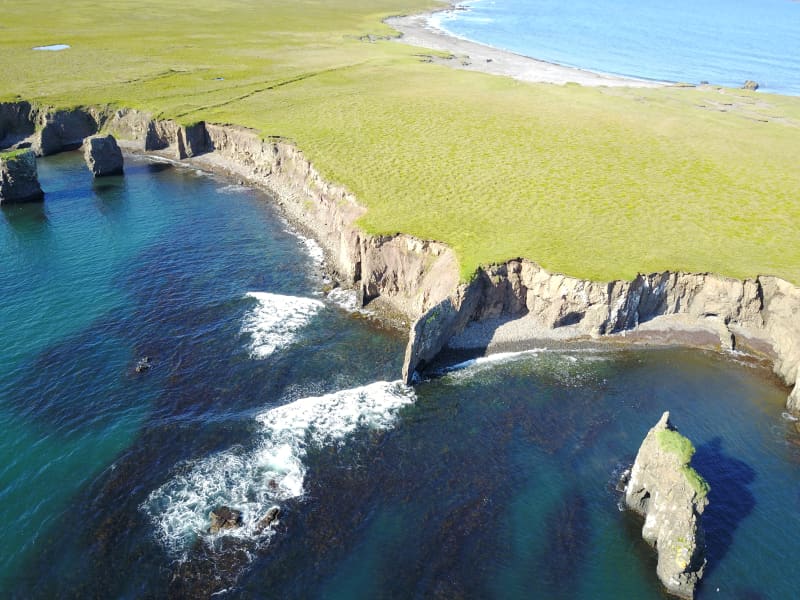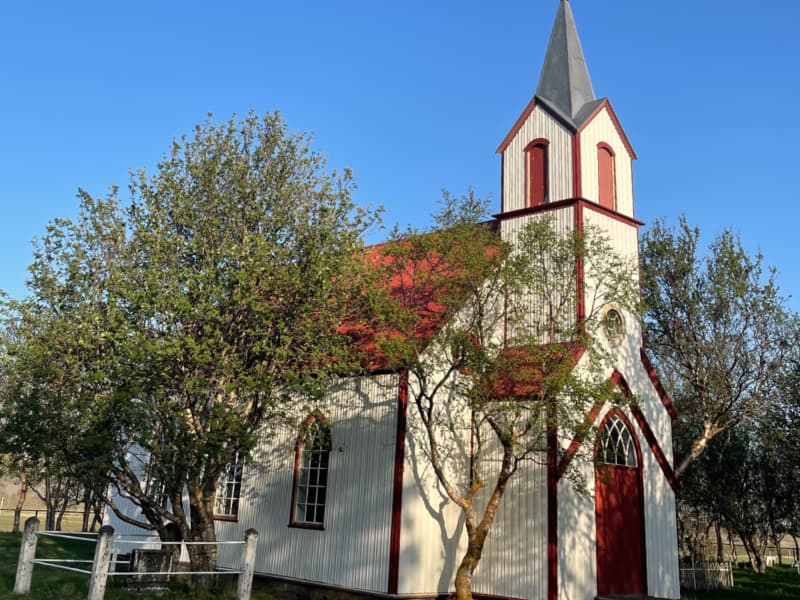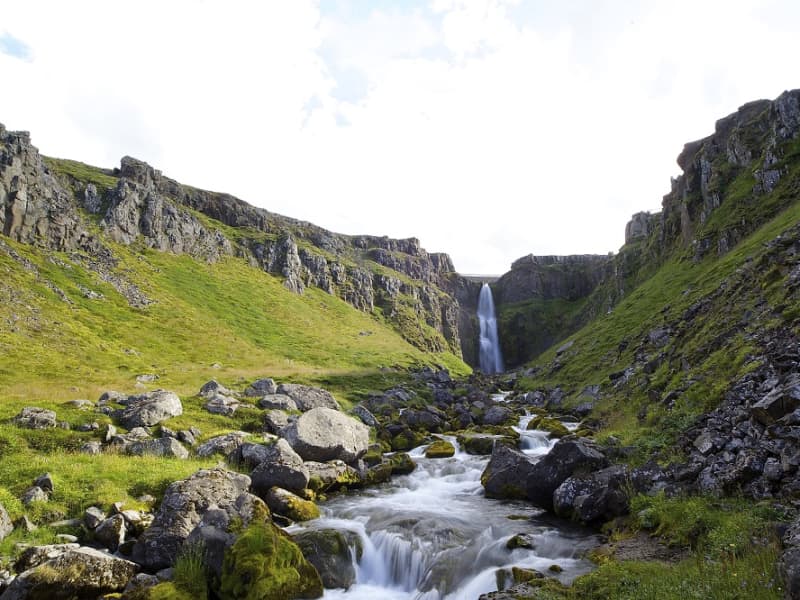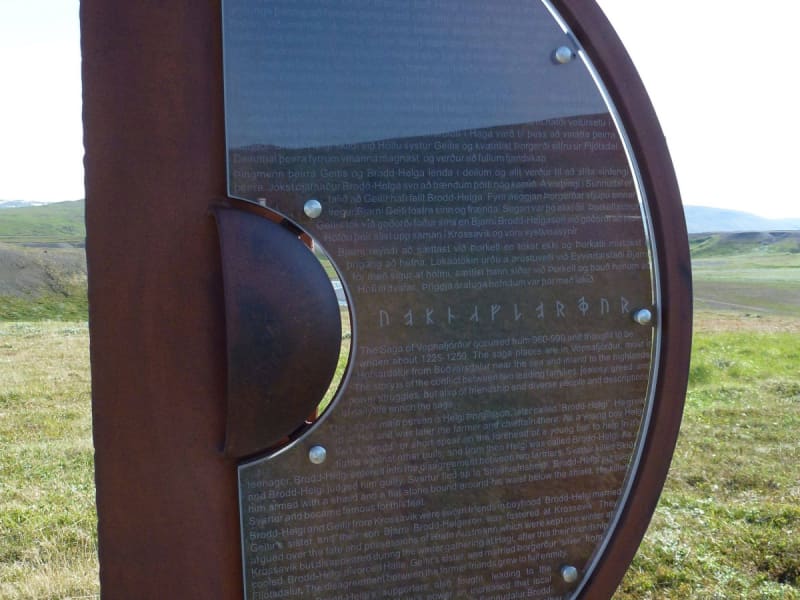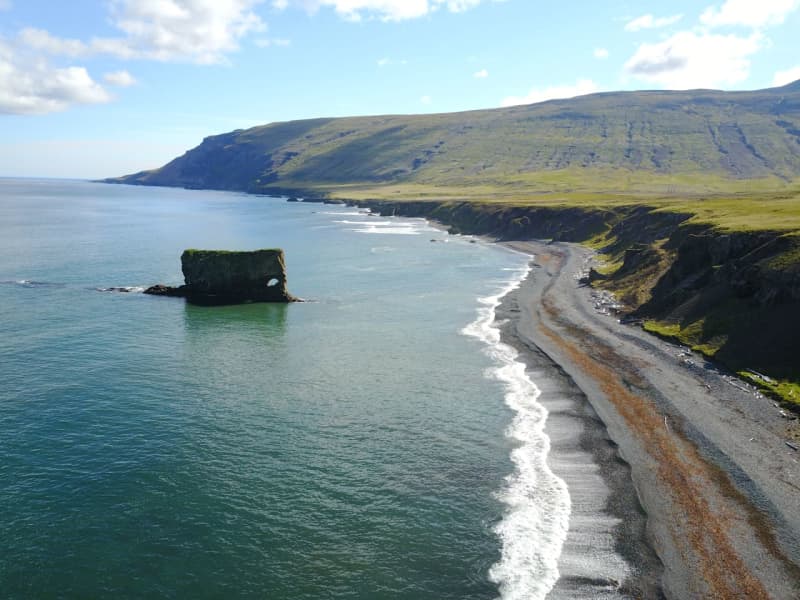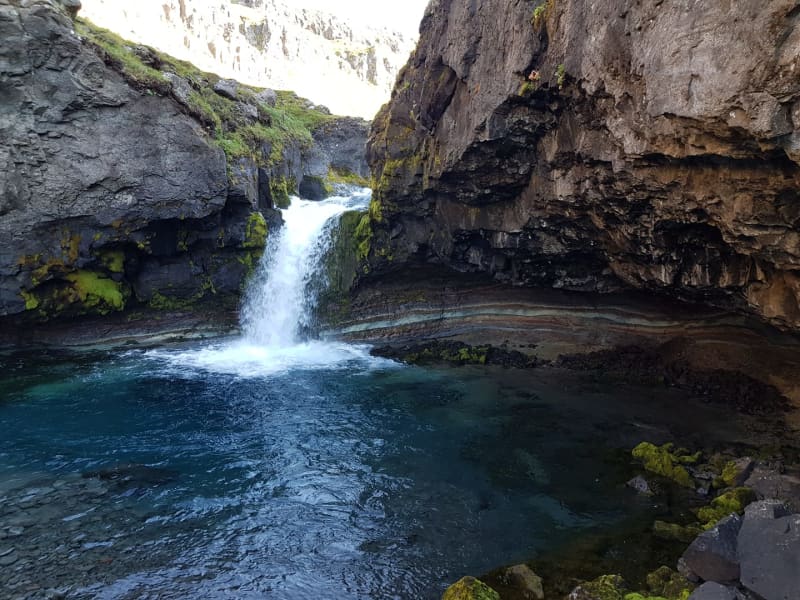Vopnfirðingasaga Monument
An archeological dig in 2006 revealed ruins from the time of Vopnfirðingasaga, not far from the present church at Hof. The saga is believed to have been written in the 13th century, taking place in 960-990.
One of the main characters in Vopnfirðingasaga is Helgi Þorgilsson, whose nickname was Brodd-Helgi. He was raised at Hof and later became farmer and chieftain at Hof. As a young boy, Helgi fastened a piece of iron to a bull's head so it would win a struggle with another bull, and that is the source of Helgi's nickname. When still a teenager, Brodd-Helgi stepped in on the fight between the farmers Svartur and Skíði and judged Svartur guilty. Svartur fled up on Smjörvatnsheiði and Brodd-Helgi followed him and attacked him armed with shield and a flat stone which he had fastened in his breeches below the shield. He killed Svartur and was famous for this deed.
Brodd-Helgi and Geitir from Krossavík were great friends since childhood. Brodd-Helgi married Geitir's sister, Halla, and their son Bjarni Brodd-Helgason was fostered at Krossavík. Their involvement in the fate and property of Hrafn Austmann, who spent the winter at Krossavík and disappeared at the winter games at Hagi, led to the cooling of their friendship. Brodd-Helgi divorced Halla, Geitir's sister, and married Þorgerður "silver" from Fljótsdalur. The disagreements of these former friends ended in full-blown enmity.
The representatives of Geitir and Brodd-Helgi also disagreed and all worked toward the end of their friendship. Brodd-Helgi's unpopularity increased and was finally more than the farmers could bear. Geitir is said to have killed Brodd-Helgi at Sunnudalur. At the instigation of Þorgerður, Bjarni killed his foster-father and uncle, Geitir. But the saga was not over. Þorkell, Geitir's son, took his father's chieftainship and Bjarni Brodd-Helgason was chieftain at Hof. They had grown up together at Krossavík and were first cousins.
Bjarni tried to make peace with Þorkell but failed, and Þorkell failed three times to avenge his father's death. The final battle was on a field at Eyvindarstaðir. Bjarni was victorious, later made peace with Þorkell and invited him to live at Hof as long as he lived. Thirty years of vengeance was over.

